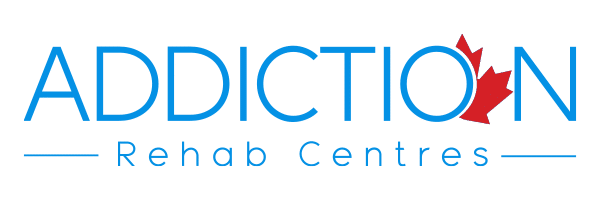Anesthetics
What are Anaesthetics?
Anesthetics (alternative spelling is ‘anesthetics’) are a classification of medications that cause a loss of sensation and are most commonly used in medical practice for major and minor surgical procedures and in the operating room so that the patient is not feeling pain. Two common forms are local anesthetics, where the loss of sensation is only in a focused area of the body (the patient is still conscious), and general anesthesia, where the loss of sensation is spread through the body (the patient is unconscious). A trained anesthesiologist administers the medication through a gas that the patient inhales; intravenously; or, occasionally through a spray or ointment.
A common example of the use of this medication is an epidural anesthetic, often referred to as simply an ‘epidural’, which numbs the lower half of the body and is used to manage pain symptoms during labour and childbirth.
Recreational use of Anesthetics: Social Context
Ketamine (sometimes called ket, special K or vitamin K) is a form of anesthetic used both in human and veterinary care that is commonly used as a street drug. Ketamine is used in liquid form medicinally, however, can be sold illegally as a powder or a pill. As the substance causes the user to lose consciousness, it is sometimes used as a “date rape” drug. Ketamine has also been in the news recently as a potential treatment for depression and chronic pain, with one clinic in Mississauga, Ontario, offering IV treatments. However, there have only been a small number of clinical trials and this off-brand use of ketamine is still not FDA-approved.
The recreational use of propofol amongst health care professionals has also increased in recent years. When used correctly, propofol is administered initially to sedate a patient before the administration of a general or local anesthetic. Small doses of propofol can cause a high, with mild hallucination effects possible, which has led to the drug’s abuse amongst medical staff. With the varied sleep schedules that are common in the medical field, one hypothesis is that anesthesiologists use propofol as a sleep aid. As recreational use of morphine and other opioid drugs has increased, closer attention is paid to how these drugs are dispensed and accounted for within medical facilities – since anesthetic drugs can only be administered by specialized personnel who have graduated from academic anesthesia programs, propofol is not classified as a controlled substance. This is likely contributing to the higher incidence of drug abuse within the medical community.
A highly publicized case of an anesthetic overdose was the death of a pop star, Michael Jackson, who died of a propofol overdose. Because of its powerful and immediate sedative effects, Jackson’s doctor prescribed the ultimately fatal dose as a sleeping aid. Jackson was allegedly left unattended, and died as a result.
Where did Anaesthetics Come from?
Forms of anesthetic drugs have been used since the 1800s, with ether being one of the earliest forms of an inhalation drug to reduce sensation. Chloroform later became popular, notably given to women during childbirth and rendering them unconscious. Both of these chemicals are quite dangerous and have since been replaced by much safer alternatives. Ketamine was developed in the 1960s and was commonly used in veterinary care and as a sedative for humans. It quickly grew in popularity in the United States to treat injured patients during the Vietnam war due to its safety and efficacy.
Anesthetics in the Western world are particularly safe due to the rigorous training that physicians must complete before becoming anaesthesiologists. In Canada, anesthesiologists complete a pre-medical degree, graduate from medical school and finally complete a five-year specialty residency program in the field of anesthetics.
What Happens to your Body when you use Anaesthetics?
The primary function of anesthetic drugs is to stop the brain from feeling pain: the word anesthesia literally means insensitivity to pain. The drugs work by stopping nerve signals from travelling to the brain to alert it of pain or discomfort. Depending on the type of anesthetic, the drug can desensitize the entire body or small portions of the body for more minor procedures. These drugs are a critical part of our modern medical practices as they enable surgeons to do extensive work within the body, while the patient is unconscious and free of pain. In extremely rare cases, patients can be allergic to anesthesia and have an anaphylactic reaction.
When used recreationally ketamine is considered a dissociative drug, meaning the user feels their mind is separated from their body. The user experiences euphoria and hallucination, which makes this drug prone to abuse. The body also acclimatizes quickly to the amount of ketamine needed to produce these effects, another factor that makes this drug addictive, though there is not a direct chemical dependence in the brain.
When used recreationally, propofol can induce a deep sleep with a very fast onset. Alternatively, in smaller doses, it can provide a mild high and possibly hallucinations. It is very easy to overdose on propofol, as very few units of the drug tip the scales towards complete sedation, which makes it very dangerous.
Side effects of recreational Anaesthetic use
Frequent use of ketamine can lead to the body acclimatizing to the dosage, and the user will often use more to achieve the same high or hallucination effects. Ketamine raises blood pressure and heart rate, and due to its disassociation effects, the user may not be aware that they are feeling unwell. Because of this lack of sensation, the user may also be unaware of injuries sustained while they are high.
As with any street drug, the user has no way to determine what exactly is in the product that they are consuming – what they believe to be ketamine power could just as easily be cocaine, or could be contaminated with fentanyl, for example. Unknowingly ingesting opioids or other narcotics can lead to drug dependence and drug addiction.
Within the medical community, the abuse of propofol is dangerous not only to the user but to the patients they may later be treating. Because there is a very minimal difference between achieving a high versus an overdose, propofol is incredibly dangerous. As a sedative, it slows down body functions including the heart rate and breathing – if too much propofol is taken, the heart rate slows too much and the dose can be fatal, as was the case for Michael Jackson.
What are Some Signs of Anaesthetic Abuse?
A common misconception is that a person can become addicted to anesthesia after undergoing surgery. The problem does not lie in the amount of anesthetic ingested during the surgery, but in the medication and dosages used to manage the pain post-surgery with opioids, typically morphine. Now with the opioid crisis in Canada, patients are much more carefully monitored in terms of what they are being prescribed in the first place, and how many refills are allowed on their prescriptions in an effort to reduce the number of people who become addicted to powerful painkillers.
However, when anesthetics are taken recreationally, dependence can be established. Signs of ketamine abuse are quite similar to signs of alcohol or drug abuse in general and can include:
- mood swings
- depression
- difficulty concentrating and making decisions
- memory impairment
- difficulty breathing
How is an Anaesthetic overdose treated?
Ketamine affects each individual differently, but some signs of a ketamine overdose include:
- nausea and vomiting
- terrors and violence due to hallucinations
- paralysis
- chest pain and irregular heart rate
- loss of consciousness or comatose state
- seizures
At this time, there is no FDA-approved drug specifically formulated to reverse the effects of ketamine or to treat a ketamine overdose. It is still critical that a person who has overdosed is taken to emergency services, where their vital signs can be monitored. Because of the sedative nature of the drug, an overdose can cause paralysis, and the user could potentially choke on their vomit or have difficulty breathing. If necessary for the individual, anti-seizure medication can also be administered.
Overdoses of ketamine on its own are rare, however, it is the combination of ketamine with opioids, other narcotics, or alcohol that can make the drug particularly dangerous, where it can exacerbate other symptoms and effects of other drugs.
How is Anaesthetic Addiction Treated?
Rehabilitation centres typically offer inpatient or outpatient programs, dependent on the individual’s needs and home situation. After a short period of complete abstinence, Ketamine withdrawal symptoms are similar to battling the flu or virus and can include:
- aches and chills
- cravings
- anxiety
- tiredness
- muscle tension
Traditional counselling services are also beneficial to patients treating ketamine addiction, or any type of drug or alcohol abuse. Addiction is never a simple, one-stop fix as there are often multiple layers and underlying issues that need to be addressed. Each individual will have his or her own path to recovery.
Rehabilitation programs or rehab centres can teach patients different strategies for managing withdrawal symptoms and mentally overcoming addiction that they can integrate into their lives in order to prevent a relapse into addictive patterns and behaviours. Often, patients may experience a period of being drug-free, but it is those who are able to maintain healthy habits that are most successful at a true detox.
Support for Caretakers
It is important to note that caretakers for those who are treating anesthetic addiction or any substance abuse disorders can quickly experience burnout and emotional distress. Navigating government systems and various therapies are experiencing the same challenges. While counselling services are undoubtedly beneficial for those experiencing addiction or withdrawal, they can also be helpful for caretakers, too. It’s important to remember that you’re not alone and that there are resources available.







